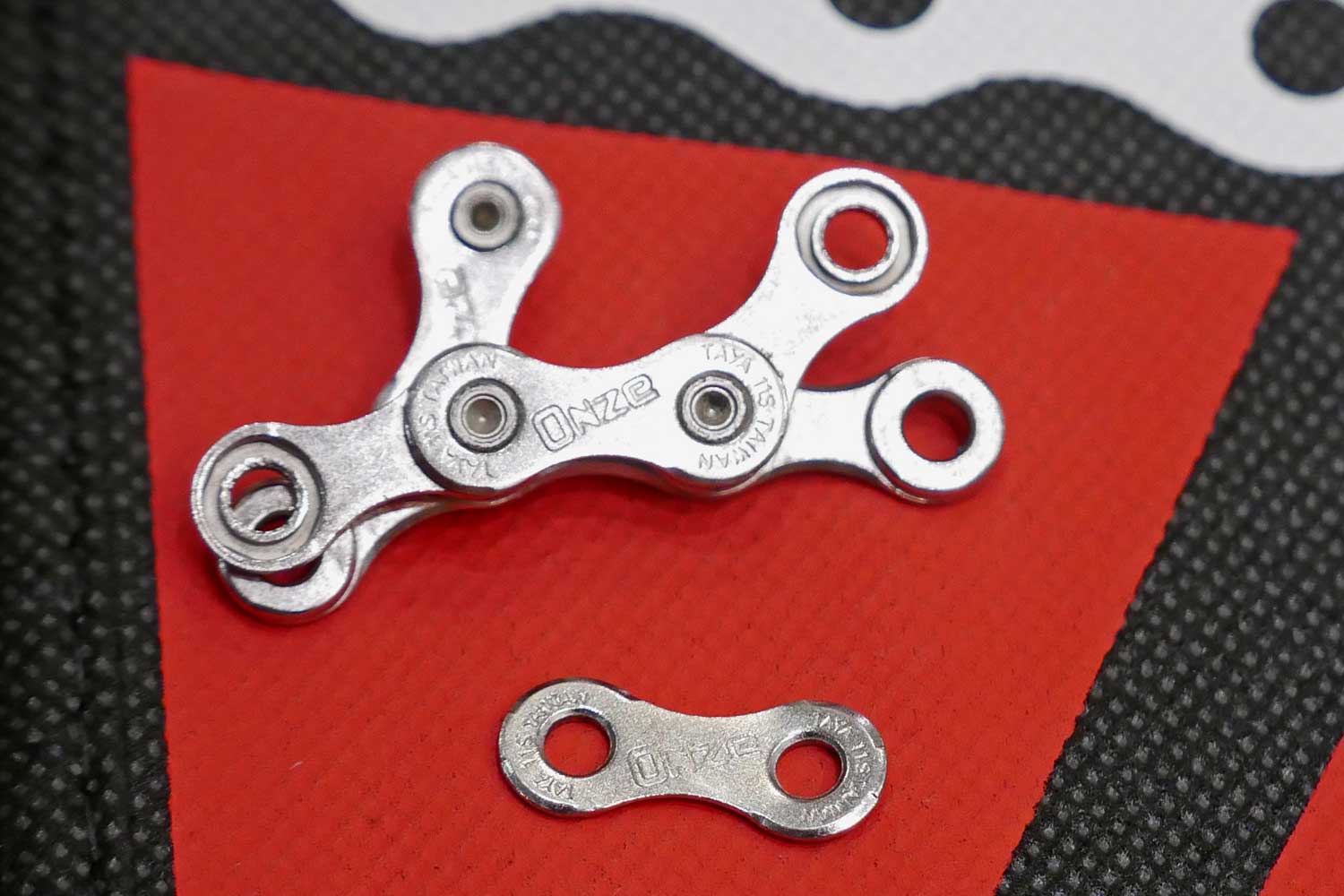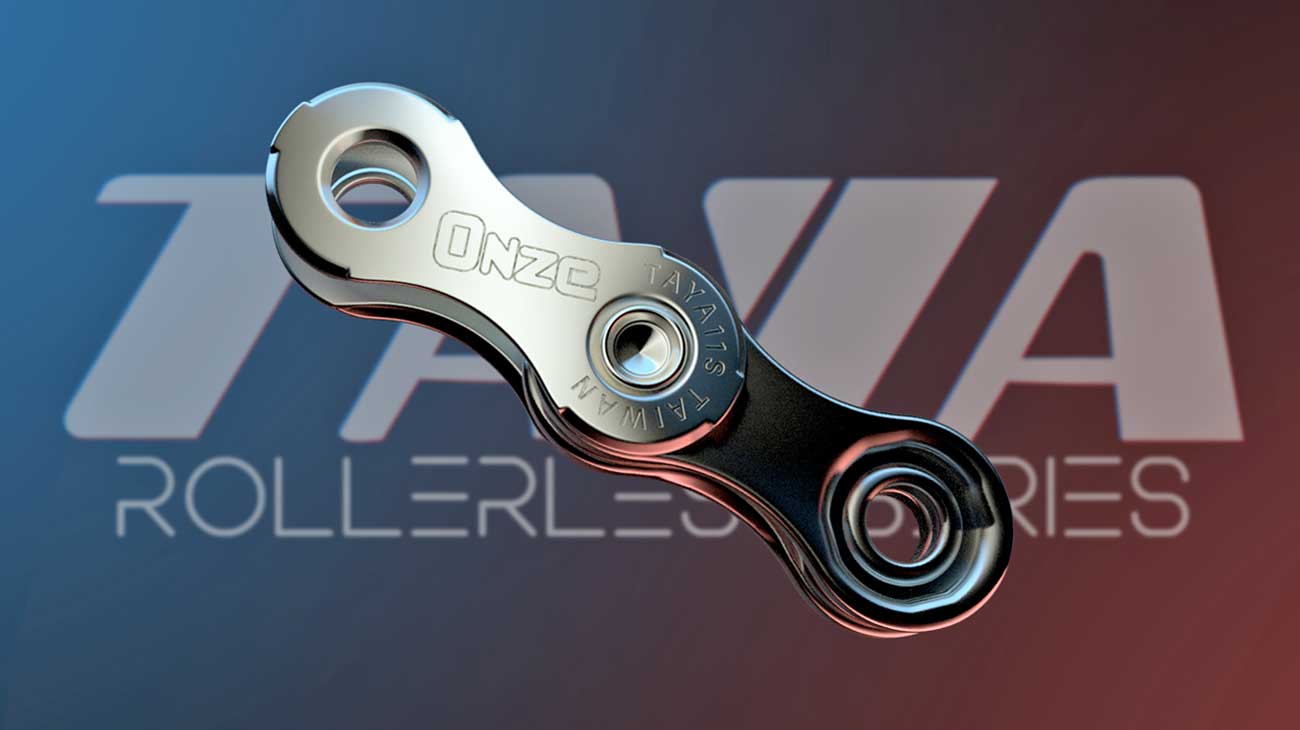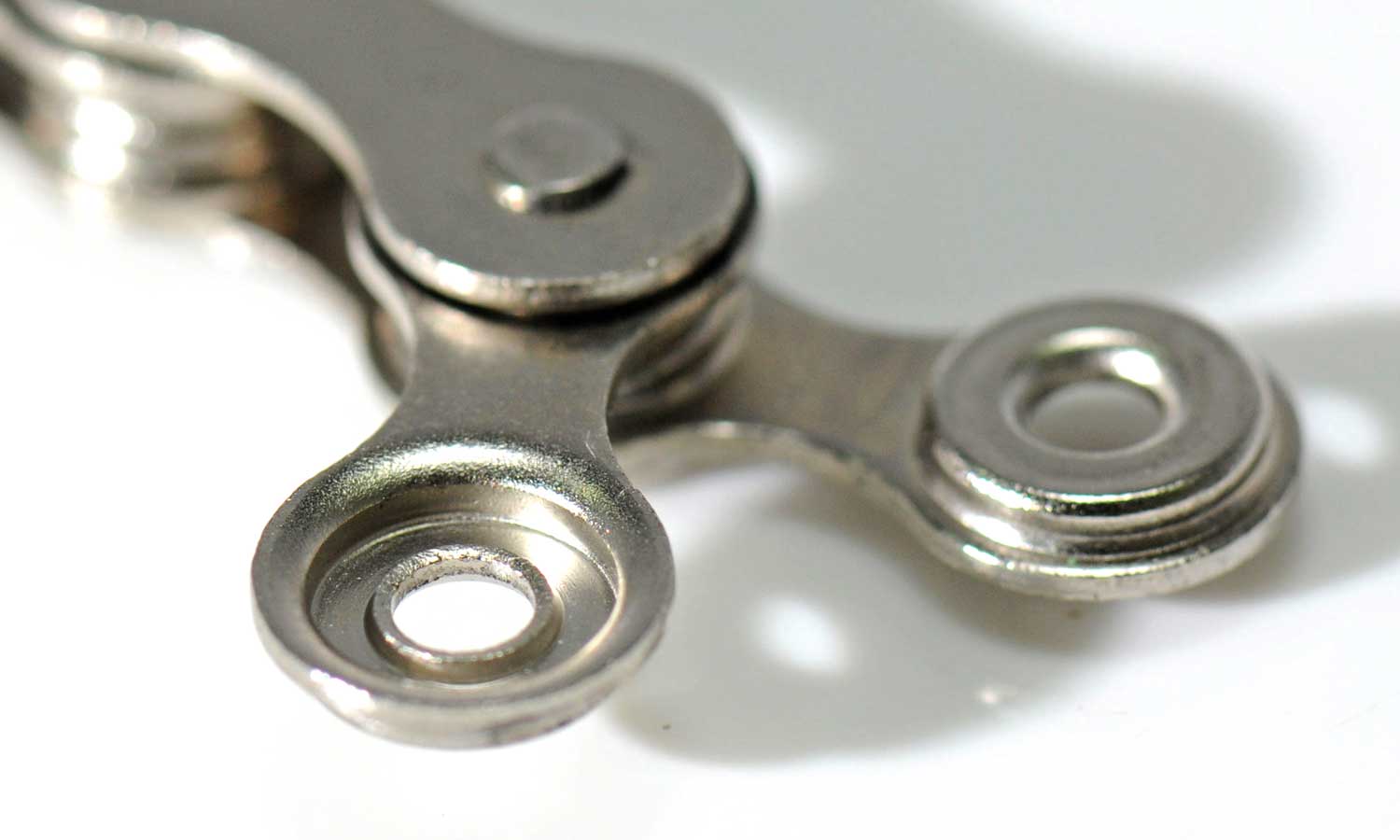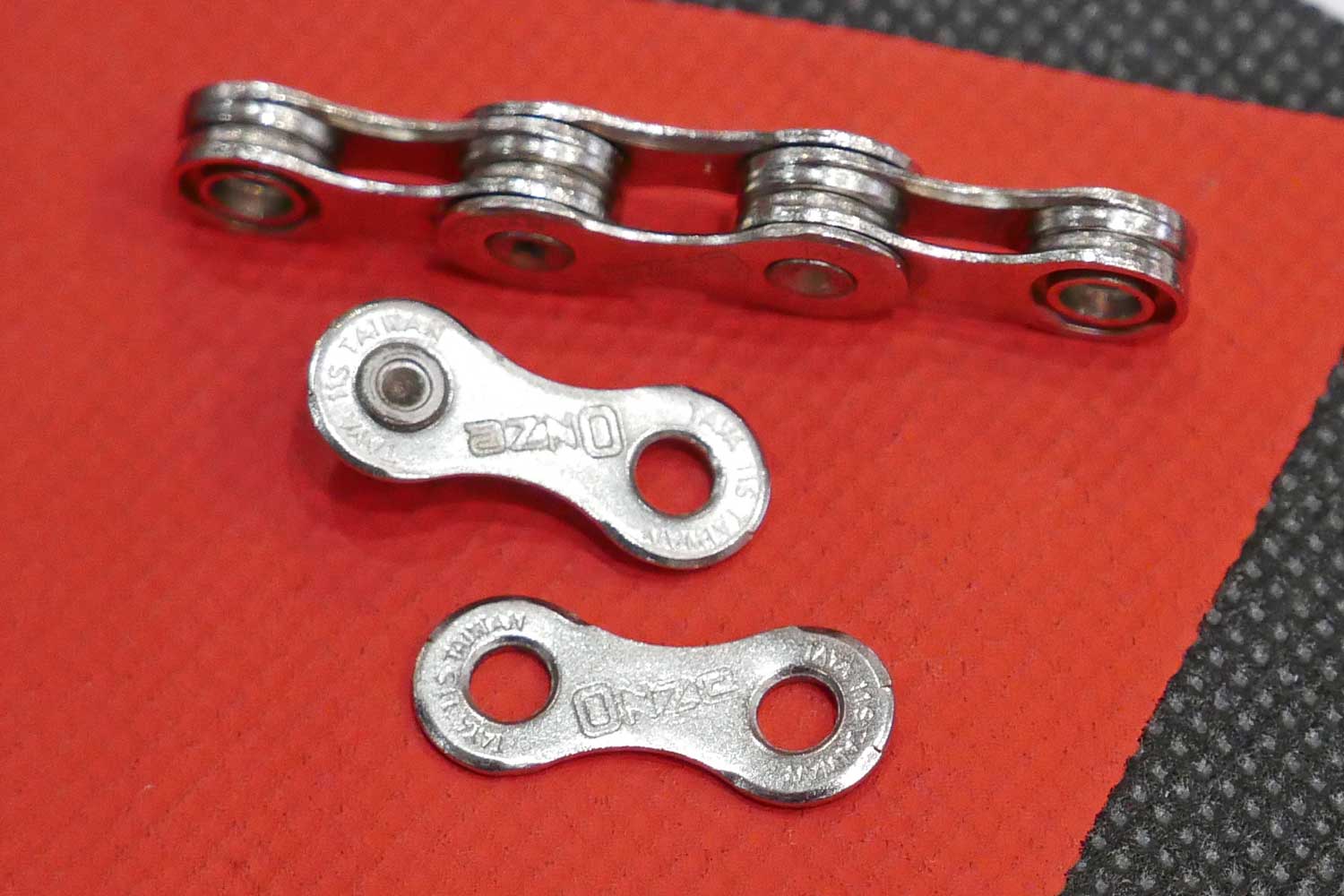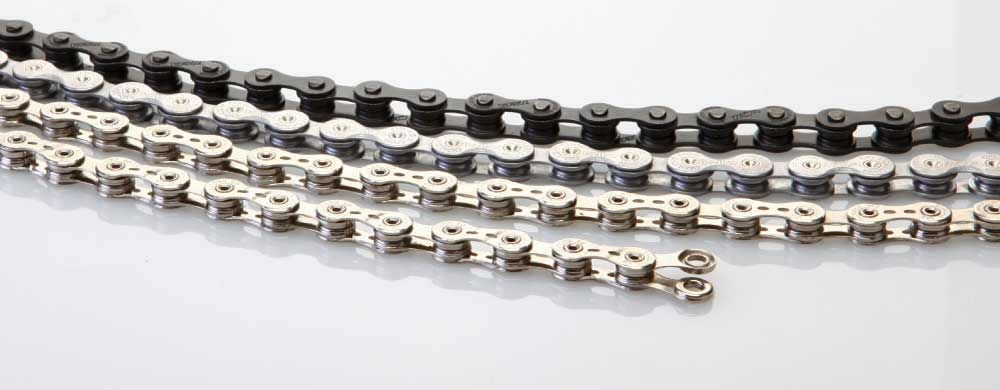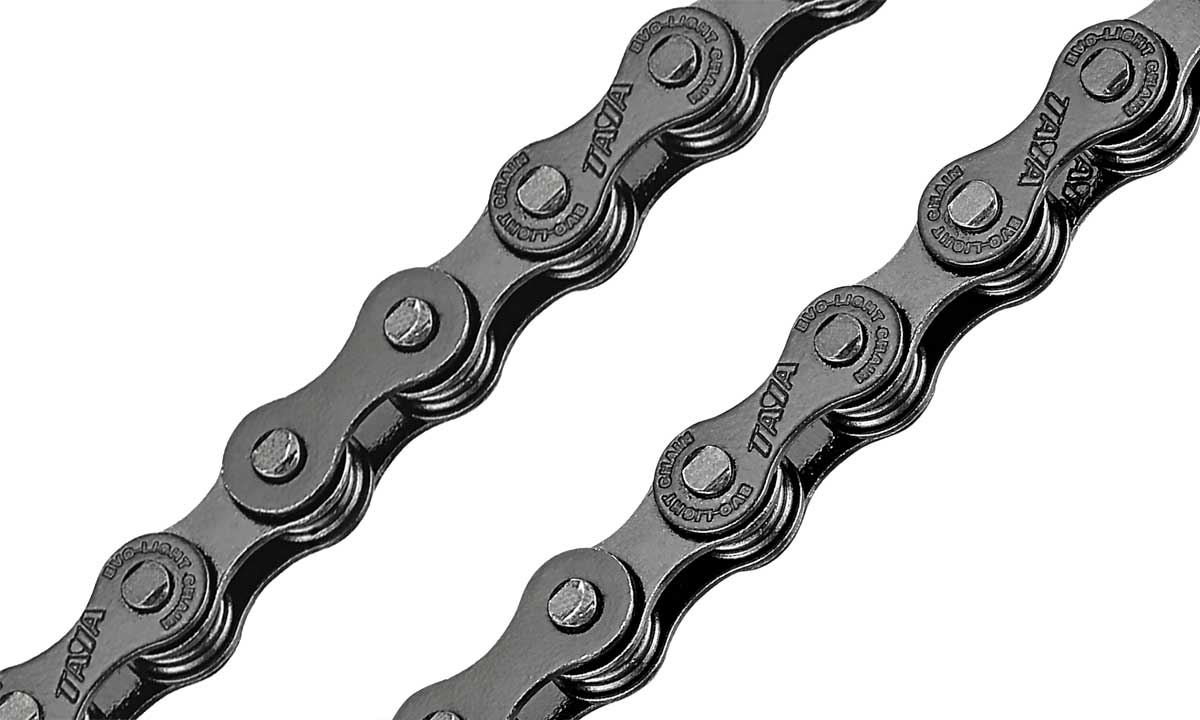Taya’s uniquely simplified Onze EVO-Light rollerless chain promises to reshape how performance chains are made. By removing one of just four elements that make up a bicycle chain, Taya says their new lightweight no-roller chain reduces drivetrain friction, retains lubrication without contamination better, and simply lasts longer.
Taya Onze EVO-Light unique lightweight, simplified rollerless chain
We got an exclusive up close sneak peek at the rollerless chain prototype on the occasion of Taya’s 50th anniversary almost two years ago when visiting them in Taiwan where the chains are produced. But now the Onze EVO-Light rollerless chains have made it through final production, and will be available globally very soon.
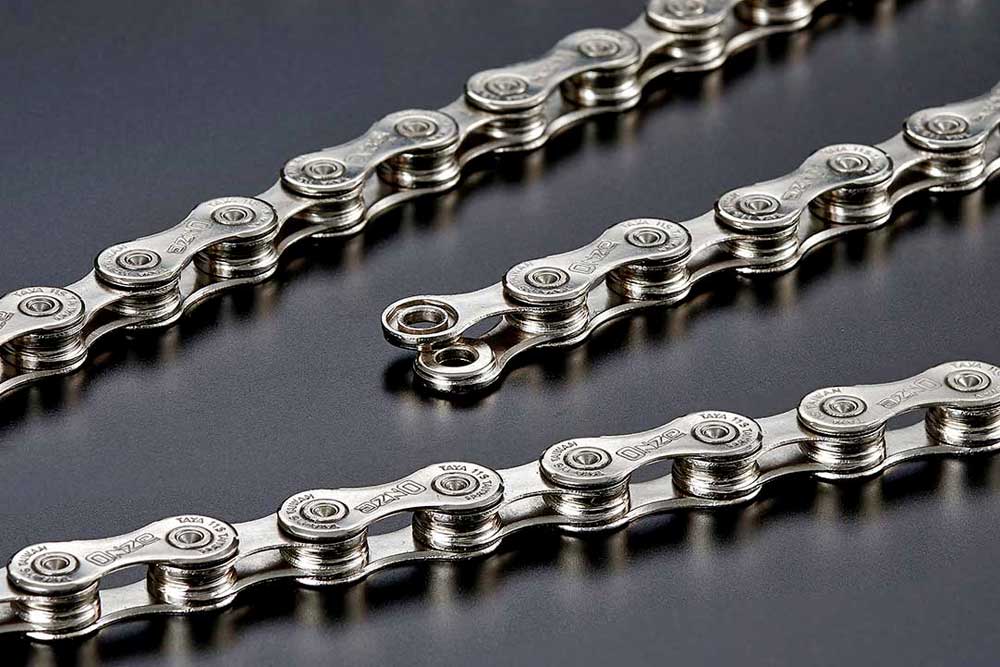
Originally developed to create a simplified and longer-wearing chain, Taya says the result actually delivers improved shift performance over the life of the chain, a quieter-running drivetrain, and a lower weight – claimed real 5% weight savings (248g vs. 268g), although our prototype comparison showed 2% savings.
Onze EVO-Light – Tech details
The tech of Taya’s Onze EVO-Light remains the same as we saw before. The innovation comes entirely in the more complexly-shaped, forged inner plates, with half of the chainring/cog roller interface formed into each side plate. Then, joined together with a conventional riveted pin & the standard outer plates, the two sides of the inner plates effectively create their own built-in roller.
Since the conventional wearing surface between roller & inner plate is removed (the same wearing surface between the pin & inner plates is still there), this new chain design is said to wear more evenly throughout the life of the chain.
Also the half-roller forging process creates a hollow trough, open to the pin-to-inner plate interface, but closed off from the outside by the outer plates. Taya says this helps retain lubricant where it is needed, while protecting chain lube from outside contamination.
The chain’s outer plates remain mostly unchanged, and like with the inner plates, they feature complex inner & outer chamfered shaping for optimized shifting. Each element of the whole assembly is also treated with Taya’s ‘thermochemical’ DHT (Diamond Hard Technology) coating that promises “up to 25% increased surface hardness” further reducing wear & slowing chain stretch.
Taya Onze EVO-Light rollerless chain – Pricing & availability
Taya’s new rollerless chains keep the same Onze name (French for eleven) as the rest of their high-performance 11-speed chains, but get a new EL designation for the Evo-Light series (not to be confused with the e-series for e-bike chains). The rollerless Onze EVO-Light is being offered first as an 11-speed chain (EL-ONZE-117) in silver only for $55 / 53€ / £49. These chains have already begun received by some distributors, so we expect global availability before the start of spring. An even lighter version with perforated side plates also appears to be in development.
A rollerless EVO-Light version of Taya’s 12-speed Tolv chain is also in the works now, with availability expected later in the year. Rollerless singlespeed and 5/6/7 speed chains are also already available now, for extended life of kids’ & city bikes.
